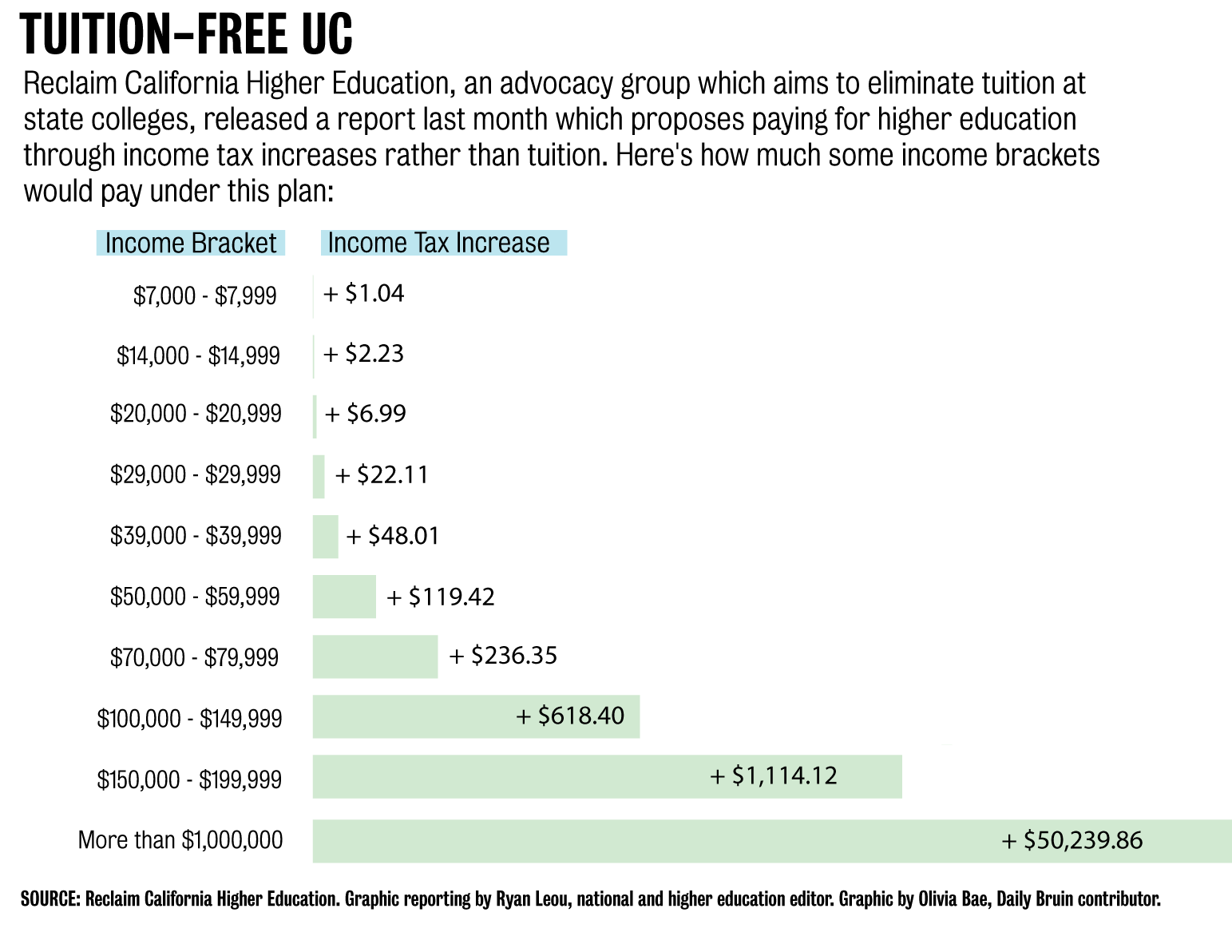New study finds tuition-free higher education possible with taxes

By Yao Lin
Feb. 23, 2017 1:27 a.m.
A tuition-free higher education would cost the median-income California family an additional $48 per year, according to a report released by a higher education advocacy coalition last month.
Reclaim California’s Master Plan for Higher Education seeks to restore the Donahoe Act of 1960, which recommended state colleges, including the University of California, remain tuition-free to in-state students.
The state would have to provide an additional $9.43 billion in funding to replace tuition and mandatory fees for resident students of California. The report proposed an increased annual progressive income tax to cover these expenses.
The increase would cost two-thirds of state households less than $150 per year, households in the top 5 percent around $7,100 per year, and median-income families $48 per year. Those who earn less than $10,000 per year would pay no more than $2 per year.
Christopher Newfield, a UC Santa Barbara professor who contributed to the report, said he favors sharing the cost of education to all California residents as a public good rather than only having the parents of more affluent California students subsidize less fortunate students.
“With the current system, what we’re asking for now is families of students to subsidize each other rather than for society to share the cost,” Newfield said.
Newfield said he thinks there is nothing radical about the report’s findings. He said he thinks the solution only seems radical in the privatization era, where everything is done in deregulated markets.
“You have to recognize that the private market is not a solution for everything, but the anti-solution for higher education,” Newfield said.
Some experts said they think tuition-free universities are not the best option for all students.
Jason Constantouros, a fiscal and policy analyst at the California Legislative Analyst’s Office, said a tuition-free program would largely benefit high- to middle-income students, because low-income students already receive financial aid.
Low-income students would likely benefit from a debt-free program which the LAO has considered in a previous report. The report recommended that the state share responsibility with students to cover tuition. Ideally, the state would cover the remainder of costs after federal grants; expected family contribution and expected student contribution are accounted for, according to the report.
This program, which would cost about $3.3 billion, would aim not to eliminate, but limit student loan debt. However, the LAO did not specify how the state plans to pay for a debt-free program.
Scholarships currently cover cost of tuition and additional fees for 57 percent of California undergraduates, said UC Spokesperson Claire Doan, regarding the affordability of UC education.
Some students said they support tuition-free higher education through additional income tax.
Sam Briante, a first-year applied mathematics student, said he thinks the tuition-free model would get rid of student loan debt and serve as a model nationwide for other states.
Yanderine Santos, a third-year biochemistry student, said she supports tuition-free higher education, but added she thinks the additional taxes are somewhat unfair. She also said she thinks the well-being of society and that of the next generation has to be considered.
Other students said they were concerned about the viability of additional income taxes.
Remi Garcia, a first-year economics student, said he has to consider the burden of a progressive income tax on nonstudent California residents to pay for tuition costs his family is already capable of paying.
Newfield said the report did not determine the impact of a tuition-free UC on international or out-of-state students.
“The report is saying we can afford this, now how do we do it politically?” Newfield said. “The report doesn’t answer that question, (instead) here’s an answer that is possible and desirable.”


